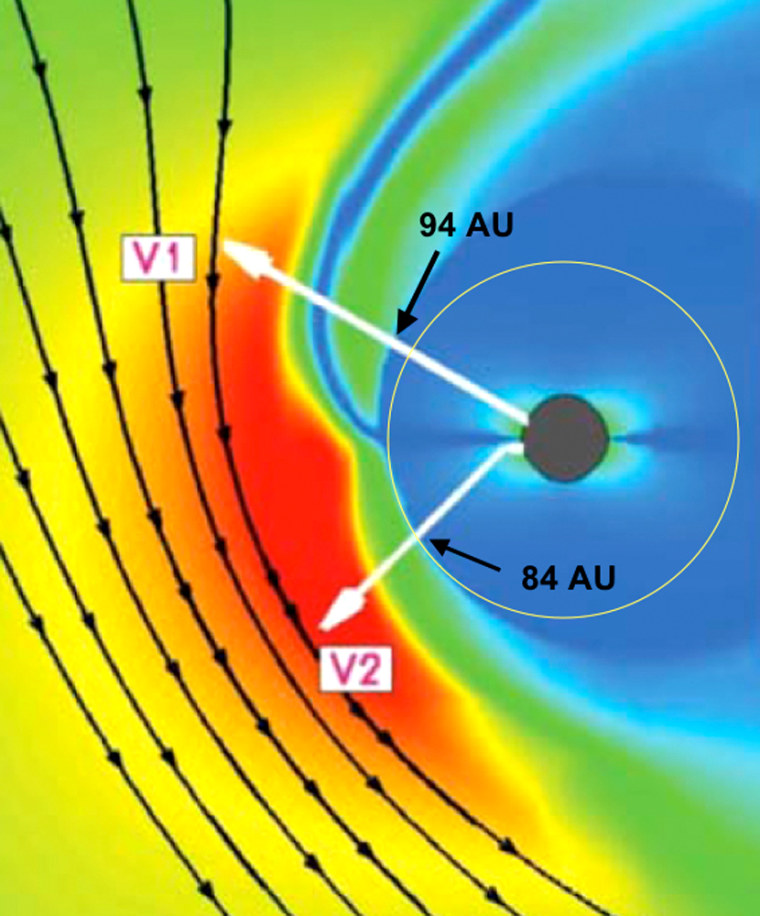New observations from the edge of our solar system show what scientists have suspected for several years: The solar system is squashed.
The edge of the solar system is roughly where the solar wind runs up against thin gas found between the stars in the rest of the Milky Way. This "wind," actually a thin gas of electrically charged particles, blows outward in all directions from the sun at between 1 million and 2 million mph (1.6 million to 3.2 million kilometers per hour), forming a bubble called the heliosphere with boundaries far beyond the orbit of Pluto.
The boundary between the heliosphere and interstellar space is an abrupt shock wave, called the solar wind termination shock. In December 2004, NASA's Voyager 1 spacecraft crossed this boundary and hinted that the shockwave was dented, or uneven in places.
Its sister spacecraft, Voyager 2, was also launched in 1977 on a mission to the outer planets. Voyager 2 crossed the shock boundary Aug. 30 this year, about 10 billion miles away from where its twin crossed. The probe confirmed that the shock wave was squashed. It was pushed in about 1 billion miles closer to the sun by the local interstellar magnetic field where Voyager 2 crossed, compared to Voyager 1's crossing point.
"So there's something outside pushing in on the southern hemisphere of the heliosphere," said Voyager mission scientist Ed Stone, that is "otherwise distorting a more or less spherical surface."
Stone says this "dent" in the heliosphere is evidence of how strong the interstellar magnetic field is.
Stone spoke during a presentation of the research here Monday at a meeting of the American Geophysical Union.
While Voyager 1 only crossed the shock wave once, Voyager 2 had multiple crossings, because the shock wave "sloshes" back and forth like surf on a beach. This allowed for many measurements of the velocity, density and temperature of the solar wind.
The data from Voyager 2 shows that the shock wave is unusual.
In a normal shock wave, fast-moving material slows down and forms a denser, hotter region as it encounters an obstacle. However, Voyager 2 found a much lower temperature beyond the shock than was predicted. This probably indicates that the energy is being transferred to cosmic ray particles that were accelerated to high speeds at the shock, scientists say.
The shock barriers act like what Stone calls a cosmic-ray accelerator — "sort of like a cosmic ping-pong game, some of the ions are reflected back across the shock." Over time, the ions gain a large amount of energy from the solar wind before they rocket out into space.
Scientists are still unsure where exactly these cosmic rays originate in the shock wave — but they do know that they don't originate where either Voyager craft crossed the shock.
Both Voyagers are currently in the heliosheath and will continue outward past the last reaches of the sun's wind, "and we will be then, for the first time, in interstellar space," Stone said, with scientists hoping to use the Voyager craft to explore space beyond our solar system.
With NASA's upcoming mission, the Interstellar Boundary Explorer, Stone and his colleagues hope more variations in the shock wave will be revealed, with possibly some effects in the east and west directions.
"It will tell us what it looks like from all directions," he told Space.com.
